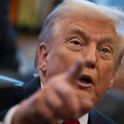
With reports that Russia asked China for armed drones last month to help its assault on Ukraine, many analysts are preoccupied with the idea that Beijing might come to Moscow’s rescue, militarily or strategically. But China could also aid Russia financially, by helping it skirt draconian sanctions imposed by the US and its allies. So far, China’s position towards Russia has been ambiguous and sometimes contradictory. Even if China wanted to ride to Russia’s rescue, though, it is a notion that works much better in theory than it would in practice.
There are three main avenues through which China could help mitigate the impact of the sanctions. With the west expelling a number of Russian banks from Swift (the messaging system for interbank payments), imposing a technology embargo on the country and imposing full energy (US) or oil (UK) embargoes, China could bolster its trade with Russia. There were some signs this might happen; on 4th February, Beijing and Moscow announced a joint cooperation agreement that included China lifting limits on wheat imports from Russia. It also included two projects to build gas pipelines from Russia to China.
Trade ties between Russia and China are strong, with commodities playing a key role. China accounts for around 15 per cent of Russia’s total exports and 23 per cent of its imports. As of 2020, that included around 30 per cent of Russia’s crude oil exports and 10 per cent of its natural gas exports. Both figures have risen very rapidly in recent years, though the latter is restricted by infrastructure that is mostly geared towards transporting natural gas to Europe. As long as the EU continues to import gas at elevated prices, Russia can rely on that hard foreign currency to cover imports. If the EU were to join in a Russian energy embargo, then China could help mitigate the blow to revenues but could not prove enough demand to offset the loss.
The ban on exports of semiconductors to Russia cannot be offset by China either. Chinese semiconductors are relatively unsophisticated compared to those from the US, and are used primarily for cars and household appliances. They are no substitute for the high-end chips needed for Russia’s high-tech companies and advanced weapons systems.
What else is possible? China could help Russia with financial services and payments to some extent. But Chinese state-owned banks have been told to uphold western sanctions. The Beijing-based Asian Infrastructure Investment Bank and Shanghai-based New Development Bank have suspended business with Russia. A 2017 law that allows the US to penalise foreign entities trading with sanctioned companies, countries and individuals could be a major impediment to doing business with Russia for any bank that wants to be able to transact in US dollars. So far, Chinese banks don’t seem to think the risk of retaliation from the US is worth it.
Those Russian banks that were kicked out of Swift could simply switch onto the Chinese payments system, the Cross-Border Interbank Payment System (CIPS). One problem is that CIPS relies on Swift for its messaging. Another is that CIPS simply does not have the liquidity or the scale to serve as a realistic alternative for Russian banks to engage with the global financial system.
China could possibly set up a number of single-purpose banks that are vehicles for circumventing sanctions. This could happen over the medium to long term, but such operations tend ultimately to be discovered and shut down. This was the case with Bank of Kunlun, after the US Treasury sanctioned it in 2012 for doing business with Iranian banks.
There is a final option: China could support the Central Bank of Russia (CBR). The CBR undertook a concerted effort from 2014 to shift the country’s foreign exchange reserves away from US dollars. Still, by mid-2021 nearly half of Russia’s $643bn in foreign reserves were still held in euros and dollars, compared with only 17 per cent in renminbi. These renminbi reserves can be used for imports from China, but the non-convertibility of the renminbi implies the People’s Bank of China (PBoC) would have to convert the reserves into hard currency. The CBR also holds around $24bn in IMF special drawing rights (a basket of currencies issued by the International Monetary Fund to all member countries). The PBoC would have to help the CBR convert its drawing rights into hard currency, but this could be seen as China not just circumventing sanctions but operating in breach of them, drawing potential retaliation from the US.
China may soften the blow to the Russian economy from sanctions by supporting trade, financial services, payments and the CBR. But any suggestion that China could be Russia’s saviour is overblown. Over time, it could support the Russian economy more effectively as new gas pipelines are built and CIPS becomes a realistic alternative to Swift and the west’s payment systems. But these developments won’t help now, as Russia’s economy creaks under the weight of the sanctions, and would likely benefit Beijing more than Moscow. Moreover, China is constrained by the dominance of the US dollar. To really help Russia circumvent sanctions, it would have to offer a substitute to the US dollar. And accounting for roughly 3 per cent of global foreign exchange reserves, the renminbi is far from that. As long as King Dollar continues to reign as the global reserve currency, the draconian sanctions on Russia will continue to bite.












